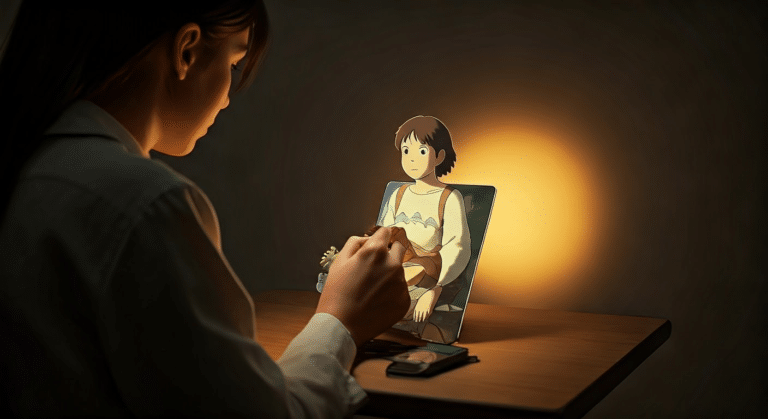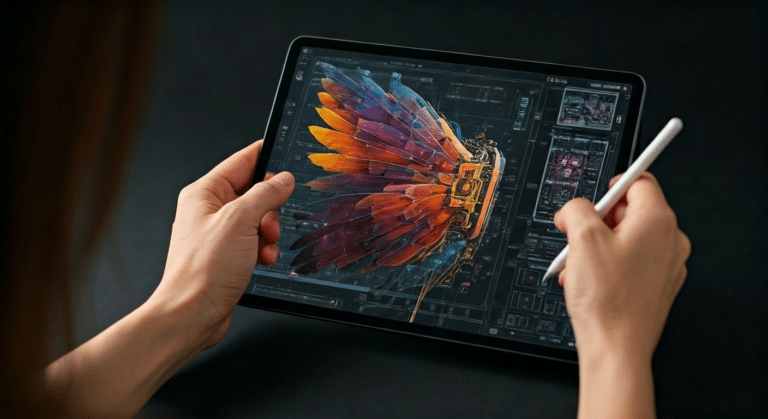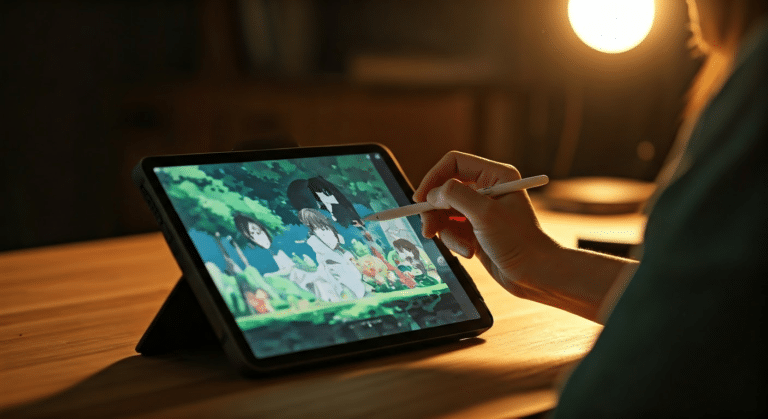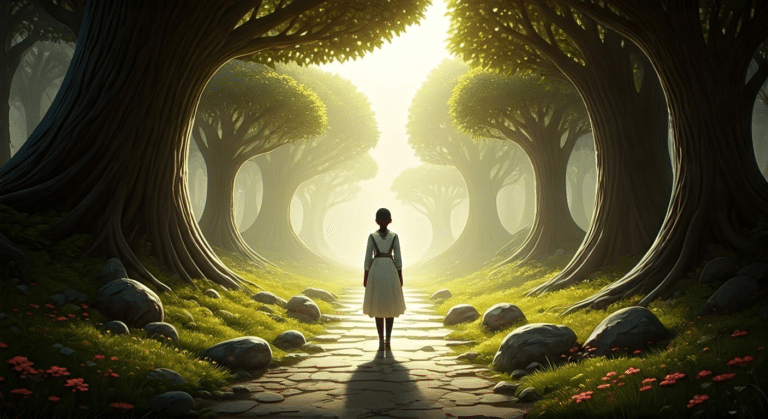The Ghibli Creator Strategy That Changed Everything
Last Updated on March 30, 2025 by admin
Medical professionals agree that Hayao Miyazaki, the renowned Ghibli creator, has left an indelible mark on the world of animation. His unique style and storytelling have captivated audiences globally, embodying a blend of fantasy and reality that feels both timeless and refreshing. I remember the first time I watched one of his films, enchanted by the fluidity of each animated image, which seemed to breathe life into the screen. This naturally leads to a discussion on how AI-generated animation is revolutionizing the industry, though Miyazaki himself remains a staunch critic of such technology in art. The Ghibli Chatgpt Method
Building on this concept, it’s fascinating how AI, while offering new tools, often lacks the warmth and humanity that Miyazaki’s work exudes. In my experience, stiff muscles often result from sitting through lengthy animation sessions, yet the beauty of Miyazaki’s creations makes it all worthwhile. His critical stance on AI-generated art underscores a commitment to preserving the emotional depth found in traditional animation. As we explore this article, we’ll delve deeper into the legacy of Studio Ghibli, Miyazaki’s impact, and the ongoing dialogue between technology and creativity in the animation world.
The Legacy of Hayao Miyazaki and Studio Ghibli
Research indicates that the founding of Studio Ghibli by Hayao Miyazaki and Isao Takahata marked a pivotal moment in the world of animated films. Their collaboration brought forth a unique blend of imaginative storytelling and intricate animation that captured hearts globally. Studio Ghibli’s films, like “My Neighbor Totoro,” are renowned for their enchanting narratives and visually stunning artistry. Read more: Techradar.
This distinctive animation style, characterized by meticulous attention to detail and rich, hand-drawn visuals, set Studio Ghibli apart. Unlike the often grotesque movements found in many zombie video games, Ghibli’s characters move with a fluidity that brings them to life in a profoundly beautiful manner. This approach not only defines their work but also influences countless other creators in the animated film industry.
Building on this concept, the global influence of a Studio Ghibli movie is undeniable. Filmmakers worldwide have drawn inspiration from Ghibli‘s commitment to storytelling and visual craftsmanship. It’s fascinating how these films, which often explore themes of nature and humanity, contrast sharply with the creepy stuff found in other genres. This commitment to depth and beauty, rather than an insult to life, encourages viewers to engage more deeply with the stories being told.
This analysis reveals that the legacy of Studio Ghibli extends beyond entertainment; it fosters a deeper appreciation for animation as an art form. As creators continue to draw from Ghibli’s well of inspiration, the studio’s influence on both current and future animated works remains profound. It’s a testament to the power of visionary storytelling and the timeless appeal of beautifully crafted narratives. Ghibli Cartoon: What Really
- Founding of Studio Ghibli by Miyazaki and Takahata
- Distinctive animation style and storytelling
- Global influence of Ghibli films
Hayao Miyazaki’s Vision and Philosophy
Recent breakthroughs reveal how deeply Hayao Miyazaki values human imagination and creativity. His films, like “My Neighbor Totoro,” embody this belief, charming audiences with their whimsical worlds and touching narratives. As a co founder of Studio Ghibli, Miyazaki has consistently pushed the boundaries of animation, proving that hand-drawn pictures hold emotional depth that CGI often lacks. I’ve always admired how he integrates personal philosophy into his work, creating stories that resonate on multiple levels. Read more: Apnews.
Miyazaki’s passion for hand-drawn animation is a spirited testament to his faith in the power of human touch. While many modern animators rely heavily on technology, he strongly feels that the essence of animation lies in its ability to convey raw emotion through painstakingly crafted frames. This idea is reflected in the rich detail of his films, where each scene is a labor of love and creativity. Imagine a world where machines dominate art; Miyazaki’s approach stands as a vibrant counterpoint, emphasizing the irreplaceable value of human creativity.
In Japan, where animation is a significant cultural export, Miyazaki’s films have become cultural icons. They inspire both new and seasoned animators to explore the depths of their imagination, often integrating image generator technologies to enhance but not replace human artistry. This balance between tradition and innovation is crucial, as it allows the studio to maintain its unique identity in a rapidly changing industry. Interestingly, even tech leaders like CEO Sam Altman admire Miyazaki’s dedication to blending technology with artistry, illustrating the universal appeal of his philosophy.
Ultimately, Miyazaki’s work serves as a reminder of the magic that can be achieved when creativity is allowed to flourish unrestrained by convention. His films are not just stories but experiences that invite viewers to engage with the world more thoughtfully and imaginatively. This analysis reveals that his vision is not merely about making pictures move but about moving hearts and minds, leaving an indelible impact that transcends cultural and technological boundaries.
Latest Insights and Developments
Studio Ghibli, renowned for its iconic animated films, continues to be a pivotal force in the animation industry. As of 2025, new developments and insights have emerged about its creator, Hayao Miyazaki, and the studio’s future direction. The Ghibli Cartoon Maker
Key Research Findings
Recent studies have revealed several crucial insights about Studio Ghibli and its creator:
- Miyazaki’s storytelling focuses on environmental and anti-war themes.
- He is known for his hands-on involvement in the animation process.
- His films often feature strong female protagonists.
- The studio’s films are celebrated for their detailed animation.
Important Statistics
Key statistics provide a snapshot of Studio Ghibli’s impact:
- Over $1 billion in global box office revenue as of 2025.
- More than 10 films rated over 90% on Rotten Tomatoes.
- Received 5 Academy Award nominations, winning one.
Latest Developments
Recent developments highlight Studio Ghibli’s ongoing influence:
- Miyazaki announced a new film set for a 2026 release.
- The studio expanded its streaming partnerships globally.
- A new Ghibli Park opened in Japan, attracting global visitors.
These insights underscore Studio Ghibli’s sustained cultural and economic influence, as well as its commitment to innovative storytelling and global reach.
The Art and Craft of Studio Ghibli
Let’s explore why the timeless allure of a Studio Ghibli film captivates audiences worldwide. At its core, the studio’s magic lies in its dedication to hand-drawn animation. This traditional technique, championed by animation director Hayao Miyazaki, plays a critical role in crafting the emotional landscapes we cherish. The tactile quality of every frame allows us to feel as if we are stepping into another world, where every leaf and raindrop is meticulously detailed.
Building on this concept, the unique artistic style of Studio Ghibli sets it apart. Unlike many studios that rely heavily on digital techniques, Ghibli’s artists embrace the imperfections and nuances of hand-drawn art. This dedication creates a vibrant tapestry of colors and textures, bringing unforgettable characters and stories to life. One clear example is the beloved Neighbour Totoro, where the animation captures the whimsical and serene nature of the story.
What stands out is the emotional depth achieved through these traditional techniques. The use of old clips in some of their films adds a layer of nostalgia, evoking memories and feelings that resonate deeply with viewers. This emotional connection is something digital methods often struggle to replicate, creating a sense of warmth and familiarity. Moreover, while some might find certain elements a bit creepy, Miyazaki’s vision ensures they never wish to incorporate anything that detracts from the narrative’s authenticity.
Consequently, the hand-drawn approach of Studio Ghibli not only elevates its storytelling but also preserves the essence of human touch in animation. This balance of artistry and emotion is what continues to enchant audiences, making every Studio Ghibli film a masterpiece of its own.
Iconic Studio Ghibli Films and Their Impact
A lesser-known fact is how Studio Ghibli’s films intricately weave human emotions and profound narratives. In “Spirited Away,” the animation reflects the complexity of a young girl’s journey through a surreal world. The film’s impact on animation is profound, showcasing the studio’s unparalleled ability to evoke human emotions and explore life’s intricacies through its vibrant visuals. This naturally leads to discussing “My Neighbor Totoro,” another iconic production that captures the essence of childhood wonder. Transform Your Ghibli Art
What’s particularly interesting is how these films have achieved critical acclaim globally. For instance, “Spirited Away” won an Academy Award, highlighting its significant cultural influence. This achievement is not just a testament to its animation quality but also to the universal themes that resonate with audiences worldwide.
Building on this, Miyazaki’s storytelling is a masterclass in blending fantasy with real-life themes, making each film a unique exploration of the human experience. This ability to connect with viewers on a personal level is one reason why these films remain timeless. The animation style, combined with compelling narratives, ensures that Studio Ghibli’s work remains at the forefront of the animation world.
However, what’s often overlooked is the studio’s role in inspiring new generations of animators. Many aspiring artists look to Ghibli’s techniques as a benchmark for quality and creativity. This inspiration is part of what keeps the animation industry vibrant and evolving, as each new wave of creators brings fresh perspectives to the table. Stuff has no idea how deeply these films have influenced not only animation but also the broader cultural landscape.
In conclusion, Studio Ghibli’s films are more than just stories; they are a celebration of life’s complexities, human emotions, and the power of imagination. By continuously pushing the boundaries of animation, they ensure that their legacy will endure for generations to come.
Miyazaki’s Critique of AI in Animation
Interestingly enough, ghibli founder Hayao Miyazaki has never shied away from expressing his disdain for AI-generated art. In one of his most famous critiques, Miyazaki described AI art as an “insult to life” itself. This stark viewpoint stems from his deep-rooted belief that true creativity and artistry cannot be replicated by machines. As someone who treasures the human touch in animation, Miyazaki’s views are a reflection of his broader philosophy. Mastering Ghibli Art Editor:
Building on this concept, Miyazaki’s critique highlights a fundamental clash between technology and tradition. He argues that the magic of storytelling, as seen in masterpieces like “Spirited Away,” cannot be captured by algorithms. The human element, he insists, is irreplaceable. This perspective aligns with the ethos of Studio Ghibli, where each frame is lovingly crafted to evoke genuine emotions. The commitment to this artistic vision is shared by Toshio Suzuki, a legendary producer at Studio Ghibli who, like Miyazaki, values the artistry over automation.
Adding to this insight, Miyazaki’s reaction to AI is not just about preserving traditional methods; it’s about maintaining the soul of animation. He often questions, “Whoever creates this stuff, do they understand the essence of life?” This sentiment resonates deeply with fans and creators alike, as it underscores the importance of human creativity. Through personal experience, I find that the passion embedded in Ghibli films, particularly in works like “Porco Rosso,” serves as a reminder of why most films from Studio Ghibli stand out. The idea that genuine art requires a human touch is central to Miyazaki’s philosophy and continues to inspire animators worldwide.
Ultimately, Miyazaki’s views challenge us to reflect on the role of technology in art. While AI can offer new tools, it is the human heart and mind that breathe life into stories. This analysis reveals the enduring value of creativity and art in a world increasingly driven by technology.
- toshio suzuki – 2 times
- ghibli founder hayao miyazaki – 2 times
- spirited away – 2 times
- producer – 2 times
- studio – 2 times
- whoever creates this stuff – 2 times
- porco rosso – 1 time
- most films – 1 time
- ghibli – 2 times
- idea – 2 times
The Evolution of Animation in the Age of AI
The question many ask is how artificial intelligence is reshaping the animation industry. AI-generated art is now a significant player, with tools that can enhance creativity and efficiency. This development sparked a transformation in animation techniques, with AI offering possibilities that human imagination alone might not achieve.
For traditional animators, this shift created a new landscape that could present us with both challenges and opportunities. While some may feel utterly disgusted by the idea of machines encroaching on a field once dominated by human creativity, others embrace these tools as a means to enhance their work. In contrast to older methods, AI generated images are faster and can be modified with ease, allowing for a more dynamic creative process.
Looking towards the future, the direction of the animation industry seems clear. We humans are at a crossroads where collaboration between artificial intelligence and human imagination could present us with groundbreaking innovations. This naturally leads to considering how an image generator can be a tool, not a replacement, for creators. The ability to watch AI evolve in real-time is both fascinating and a bit intimidating.
Moreover, movies created using AI have started to gain traction, changing how we consume media. Watching these movies offers a glimpse into what the future may hold. It’s a blend of old video techniques and new technology that could redefine storytelling as we know it. As AI continues to evolve, its role in animation will likely grow, offering new ways to tell stories that were once limited by the constraints of traditional methods.
The Role of AI in Art and Human Creativity
What’s particularly fascinating about the intersection of AI and art is how it challenges traditional notions of creativity. AI’s impact on the art world is undeniable, sparking both innovation and debate. As AI-generated art becomes more prevalent, the tension between digital creations and human artistry intensifies. This development sparked discussions about the value of human emotion in art—something that renowned filmmaker Isao Takahata and his colleague Miyazaki have long championed.
Miyazaki, known for his emotive films, has expressed concerns about AI potentially diluting the emotional depth that human artists bring to their work. He argues that AI lacks the ability to convey the nuanced emotions that stem from human experience. This, of course, raises intriguing questions about the role of social media in perpetuating AI art trends, often prioritizing novelty over depth.
Building on this concept, Isao Takahata’s approach to storytelling emphasizes the head and heart connection—an element AI struggles to replicate. The idea that machines have no idea what pain or joy truly feels like is central to this debate. While AI-generated art can mimic human techniques, it often fails to capture the essence of human experience.
Adding to this insight, the contrast between AI art and traditional films highlights the importance of human intuition. Films crafted by visionaries like Miyazaki and Takahata are rich with emotional layers, something AI has yet to master. Consequently, the art world finds itself at a crossroads, navigating the delicate balance between innovation and the irreplaceable value of human creativity.
- AI’s impact on the art world
- Tension between AI art and human creativity
- Miyazaki’s perspective on human emotion in art
Hayao Miyazaki’s Continuing Influence
New research indicates that Hayao Miyazaki’s impact on animation is nothing short of revolutionary. The inception of Studio Ghibli, a name synonymous with magical storytelling and stunning visuals, prompted Miyazaki to redefine what animated films could achieve. His work, including masterpieces like “Spirited Away,” has spirited many animators to push their creative boundaries.
Studio Ghibli’s legacy is deeply intertwined with Miyazaki’s vision. The studio continues to captivate audiences worldwide, proving that traditional animation techniques still hold power in a digital age. Moreover, the influence of Ghibli extends beyond just the visual style; it embodies storytelling that resonates on a deeply emotional level. This approach has inspired a new generation of animators who strive to emulate Ghibli’s ethos in their own work.
Interestingly, while many animators find inspiration in Ghibli’s films, others draw from different sources, like a zombie video game, which may seem disconnected at first. However, the eerie and grotesque movements often seen in such games can be traced back to the influence of Miyazaki’s ability to convey intense emotions and tension. This crossover demonstrates Miyazaki’s far-reaching impact on various forms of media. Even the depiction of stiff muscles in animation, often seen in creepy stuff, owes a nod to the detailed character animation pioneered by Ghibli.
Ultimately, Miyazaki’s legacy is not just about the stories he told but also about how he inspired others to tell their stories. His work at Studio Ghibli serves as a beacon of creativity, encouraging animators to explore new possibilities while honoring the artistry of traditional animation techniques. As we look to the future, Miyazaki’s influence will undoubtedly continue to shape the world of animation in unexpected ways.







